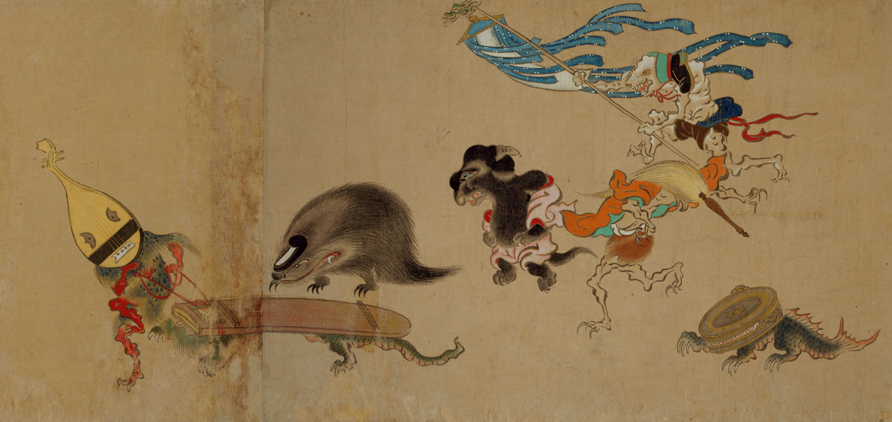Seething masses of people crushed together in searing heat; empty-eyed wraiths, heads drooping in despair, shuffling to and fro — waiting for the time when they will be released their suffering. Tokyo can be hell in July and August. It isn't all bad though; there's an excellent exhibition on yōkai, the various devils, demons and spirits of Japanese folklore, at the Edo-Tokyo Museum.
As a subject of Japanese folkloric studies, yōkai have been defined in different ways, but could broadly be described as "supernatural creatures." A fairly well-known example is the shapeshifting tanuki, the friendly racoon dog whose figure can often be seen outside restaurants and liquor stores in contemporary Japan. He appears in the exhibition smothering someone with his famously oversize scrotum in an 18th-century manga illustrated by Utagawa Toyokuni. Admittedly, suffocation by a giant pair of hairy balls is not the best way to go, but the manga is purposefully comic and what is evident from the substantial number and great variety of exhibits is that the iconography of yōkai is extremely versatile.
In "Screens of Hells and Paradise," attributed to the Pure Land Buddhist Genshin (942-1017), yōkai are used to remind the viewer of what awaits the profane people who lack faith in Amitabha, the Buddha of Infinite Light. Fanged, wild-eyed demons can be seen beating and burning the impious in a didactic representation aimed at communicating the cosmology of the Tendai sect in an easily understandable format. Among the most gruesome images, is an anonymous 12th-century scroll painting for Buddhist novices of the "Hell of Dissections," which shows the bodies of unbelievers being butchered and eaten by furious devils.


















With your current subscription plan you can comment on stories. However, before writing your first comment, please create a display name in the Profile section of your subscriber account page.